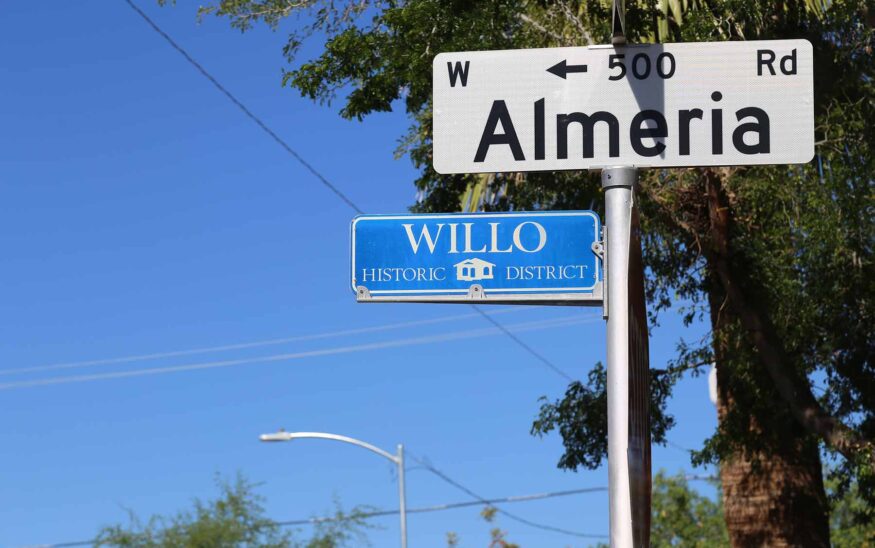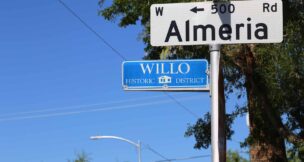Why Phoenix residents are clashing over this new housing ordinance
Jakob Thorington Arizona Capitol Times//November 8, 2025//
Why Phoenix residents are clashing over this new housing ordinance
Jakob Thorington Arizona Capitol Times//November 8, 2025//
Key Points:
-
Major cities in Arizona must adopt middle housing ordinances by Jan. 1, 2026
-
Law requires single-family residential lots near downtown areas to allow duplexes, triplexes, and townhomes
-
Phoenix City Council faces a $700 million budget cut if it doesn’t comply
Major cities across the state are working to adopt ordinances to comply with a new state law that requires higher density middle housing options near downtown areas. Now, many residents, including those who live in historic districts, are pushing back.
Cities of 75,000 residents or more are required to adopt a middle housing ordinance by Jan. 1, 2026, as a result of House Bill 2721, which was signed into law during the 2024 legislative session.
The 2024 law is intended to increase higher density housing options within larger cities of the state by requiring all single-family residential zoned lots within one mile of a city’s central business district to allow the development of duplexes, triplexes, fourplexes and townhomes.
Phoenix was among the latest cities to consider a middle housing ordinance. However, the City Council won’t officially adopt the policy until later in November, after it unanimously voted on Nov. 5 to table a decision for two weeks.
Phoenix residents packed the City Council chambers on Nov. 5 to discuss the city’s ordinance draft and many of them resided in historic districts, including the Willo Historic District. The ordinance would create a middle housing overlay in compliance with state law while also allowing for up to 20% of lots in new residential subdivisions that are at least 10 contiguous acres in size to be developed with middle housing buildings — another provision of the law.
Willo residents are seeking an exemption to the middle housing law for historic districts in the next legislative session, arguing the law will encourage the demolition of historic homes in favor of out of state investors developing higher density units that destroy the character of neighborhoods.
“This bill isn’t about affordability. It’s a gift to developers,” said Brad Brauer, president of the Willo Neighborhood Association. “It pushes home ownership out of reach and risks further destroying the neighborhoods that give Phoenix its soul.”
The law is structured so that if an applicable city doesn’t adopt a middle housing ordinance, then it would lose its shared revenue funding as a consequence. For Phoenix, that’s nearly $700 million — more than 35% of the city’s budget.
“It’s not a risk I’m willing to take with 1.7 million residents who depend on city services, especially when some neighbors have already lost federal services and benefits due to the federal government shutdown,” said Phoenix Vice Mayor Ann O’Brien.
Several residents, both for and against the middle housing ordinance, said they wanted to see it extended across the entire city. Residents supporting the ordinance said doing so would increase housing supply, while opponents said it would be more fair to historic districts.
Phoenix City Councilwoman Anna Hernandez, who helped get HB2721 signed when she was a legislative cosponsor, said she would have preferred the law to extend more broadly, but the League of Arizona Cities and Towns lobbied for a requirement that it apply within one mile of a downtown area.
“Like it or not, we are in the middle of an affordability and attainability issue,” Hernandez said. “We need all the tools in the toolbox. Nobody has ever said that this piece alone is going to solve the entire crisis we have, but it is a step in the right direction for a lot of reasons.”
Sen. Analise Ortiz, D-Phoenix, also attended Nov. 5’s City Council meeting and told the council she wanted to see the ordinance extended citywide because it would allow for her community in Maryvale to also be included in the city’s policy. Ortiz was also a cosponsor of the 2024 law.
“Young professionals should not be locked out of those opportunities to live in those nice neighborhoods like historic neighborhoods where you do value that sense of community,” Ortiz said. “Those types of duplexes and triplexes already exist in places like Willo. They’re just very old.”
Rep. Aaron Marquez, D-Phoenix, introduced a historic neighborhood exemption bill in the 2025 session, but it was not heard in the House Government Committee.
A letter sent by Save Historic AZ, a neighborhood coalition opposed to the middle housing law, requested that Phoenix council members recognize the law as inapplicable to historic neighborhoods, as they already allow more diverse housing options, including duplexes and accessory dwelling units.
The coalition also noted in its letter that historic districts must have at least 51% of their buildings designated as contributing structures, or buildings with historic architectural qualities, to retain their historic designation. Neighborhood leaders who signed the letter believe the law endangers the status of historic neighborhoods.
Robert Warnicke, president of Phoenix’s La Hacienda Historic District, said lots in historic districts are zoned as multifamily because they allow for the development of duplexes. He said this already gives historic neighborhoods an exemption from the middle housing law because its language specifically applies to single-family zoned lots and urged the city council to exempt historic neighborhoods from its ordinance.
“If the state wants to take power away from a charter city, take power away from you (the city council), then it should have been clearer,” Warnicke said.














































